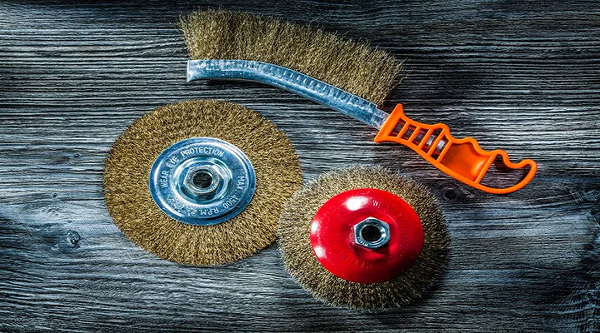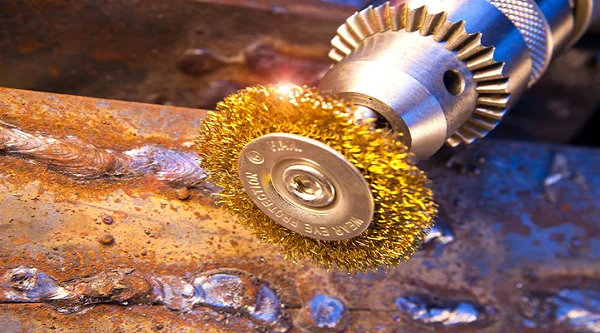Wire brushes are essential tools in various industries and crafts, known for their effectiveness in cleaning, deburring, and surface preparation. However, proper storage is crucial to maintaining their performance and extending their lifespan. In this article, we’ll explore the best practices for storing wire brushes, ensuring they remain in optimal condition for your projects.
Understanding Wire Brushes
Before diving into storage techniques, it’s essential to understand what wire brushes are and how they work. Wire brushes consist of bristles made from steel, brass, or nylon, attached to a handle or a rotary tool. They come in various shapes and sizes, each designed for specific tasks, such as removing rust, paint, or grime from surfaces.
Types of Wire Brushes
Cup brushes are designed with bristles arranged in a cylindrical shape, making them ideal for cleaning large, flat surfaces. They are often used with power tools for applications such as removing paint, rust, or corrosion. Cup brushes come in two primary styles: crimped and straight.
- Crimped Bristles: These offer flexibility and are less aggressive, making them suitable for softer materials or delicate tasks.
- Straight Bristles: These are stiffer and more aggressive, perfect for heavy-duty cleaning and stripping applications.
Applications: Ideal for industrial cleaning, automotive work, and metal preparation.
End brushes have bristles arranged in a circular pattern at one end, allowing for effective cleaning in tight spaces and intricate areas. They are often used with rotary tools for tasks that require precision, such as cleaning inside corners, welds, and small openings.
Applications: Commonly used in plumbing, HVAC, and automotive industries for cleaning and surface preparation.
Wheel brushes feature bristles set at an angle and are typically used with power tools for heavy-duty cleaning tasks. They can come in various sizes and bristle materials, offering versatility for different applications. Wheel brushes are excellent for deburring, cleaning, and polishing metal surfaces.
Applications: Suitable for applications such as metal fabrication, automotive finishing, and weld cleaning.
Nylon wire brushes are made with synthetic bristles that provide a gentler cleaning option compared to metal wire brushes. They are effective for cleaning delicate surfaces without scratching or damaging the material. Nylon brushes are less abrasive and can be used on various materials, including wood, plastic, and soft metals.
Applications: Ideal for light cleaning tasks, surface finishing, and applications where a softer touch is needed.
The Importance of Proper Storage
Storing wire brushes correctly is vital for several reasons:
- Preventing Damage: Wire brushes are susceptible to damage if not stored properly. Bristles can become bent or misshapen, rendering the brush less effective.
- Maintaining Cleanliness:Proper storage prevents contaminants from accumulating on the bristles, ensuring that the brushes remain clean and ready for use.
- Extending Lifespan: By preventing rust, corrosion, and bristle damage, proper storage can significantly extend the lifespan of your wire brushes.
- Safety: Storing wire brushes safely reduces the risk of injuries caused by exposed bristles or sharp edges.
Best Practices for Storing Wire Brushes
- Clean the Brushes Before Storing
Before putting away your wire brushes, it’s essential to clean them. Removing debris and contaminants will help prevent corrosion and ensure the bristles remain in good condition.
Method: Use a soft cloth or compressed air to remove loose debris from the bristles. For heavy buildup, you can use a mild detergent and water. Ensure the brushes are thoroughly dried after cleaning to prevent rust.
- Use Protective Cases or Holders
Storing wire brushes in protective cases or holders can significantly extend their lifespan. Here are a few options:
- Brush Holders: These holders are specifically designed to store wire brushes. They often have compartments that prevent brushes from rubbing against each other.
- Toolboxes: If you don’t have dedicated brush holders, a toolbox can serve as an excellent alternative. Choose a compartment with a padded interior to avoid damage.
- Magnetic Strips: For easy access and organization, consider using magnetic strips mounted on walls. This method keeps brushes visible and prevents them from getting damaged in a drawer or box.
- Store in a Dry Environment
Wire brushes should always be stored in a dry, humidity-controlled environment. Excess moisture can lead to rust and corrosion, compromising the brushes’ integrity.
Ideal Conditions: Aim for a storage environment with low humidity levels (ideally below 50%). Avoid basements or damp areas that can introduce moisture.
- Avoid Direct Sunlight
UV rays from direct sunlight can degrade some materials, including the handles and bristles of wire brushes. Store brushes in a shaded area or inside a cabinet to protect them from harmful exposure.
- Separate Different Types of Brushes
If you own multiple types of wire brushes, it’s best to store them separately. This prevents cross-contamination of materials and ensures that the brushes retain their intended purpose.
Organizational Tips: Label storage containers or compartments according to the type of brush. This makes it easier to find the right brush for the job.
- Store Handles Up
When storing handheld wire brushes, keep the handles facing up. This prevents unnecessary pressure on the bristles and helps maintain their shape.
- Regularly Inspect Stored Brushes
Conduct regular inspections of your stored wire brushes to check for signs of wear, damage, or corrosion. Address any issues immediately to prevent further deterioration.
What to Look For: Check for bent or broken bristles, rust spots, or signs of deterioration on the handles. If a brush is beyond repair, it’s best to replace it to ensure optimal performance.
- Consider Temperature Variations
Extreme temperature fluctuations can affect the integrity of wire brushes. Aim to store them in a stable environment where temperatures are consistent.
Temperature Control: If you live in an area with drastic seasonal changes, consider storing brushes indoors rather than in sheds or garages that may experience temperature extremes.
Common Mistakes to Avoid
- Storing Wet Brushes
Never store wire brushes while they are still wet. This can lead to rust and corrosion. Always ensure they are completely dry before storing them away.
- Using Inappropriate Storage Materials
Avoid storing wire brushes in cardboard boxes or plastic bags that may trap moisture. Instead, opt for breathable containers that allow air circulation.
- Overloading Storage Spaces
Don’t overcrowd your storage area with too many brushes. This can lead to damage and makes it challenging to find the right brush when needed.
Conclusion
In conclusion, proper storage of wire brushes is essential for maintaining their effectiveness and extending their lifespan. By cleaning them before storage, using protective cases, ensuring a dry and stable environment, and regularly inspecting them for damage, you can prevent rust, corrosion, and bristle damage. Implementing these best practices not only enhances the performance of your wire brushes but also saves you money by prolonging their usability, ensuring they are always ready for your cleaning and surface preparation tasks.


